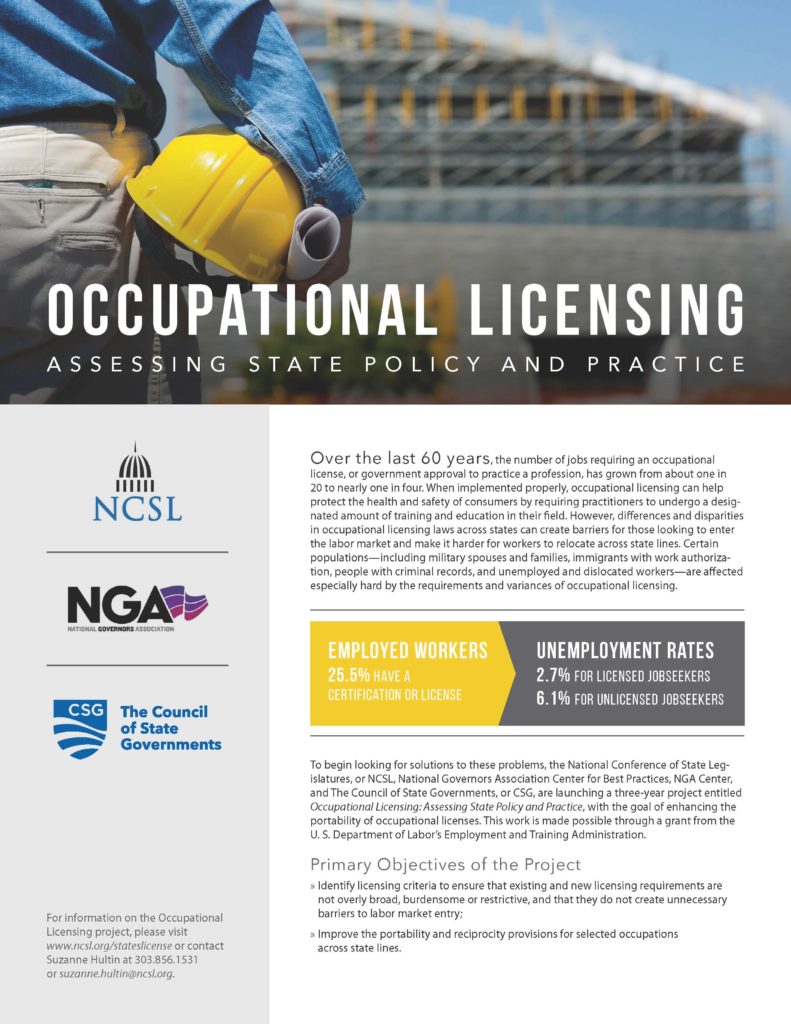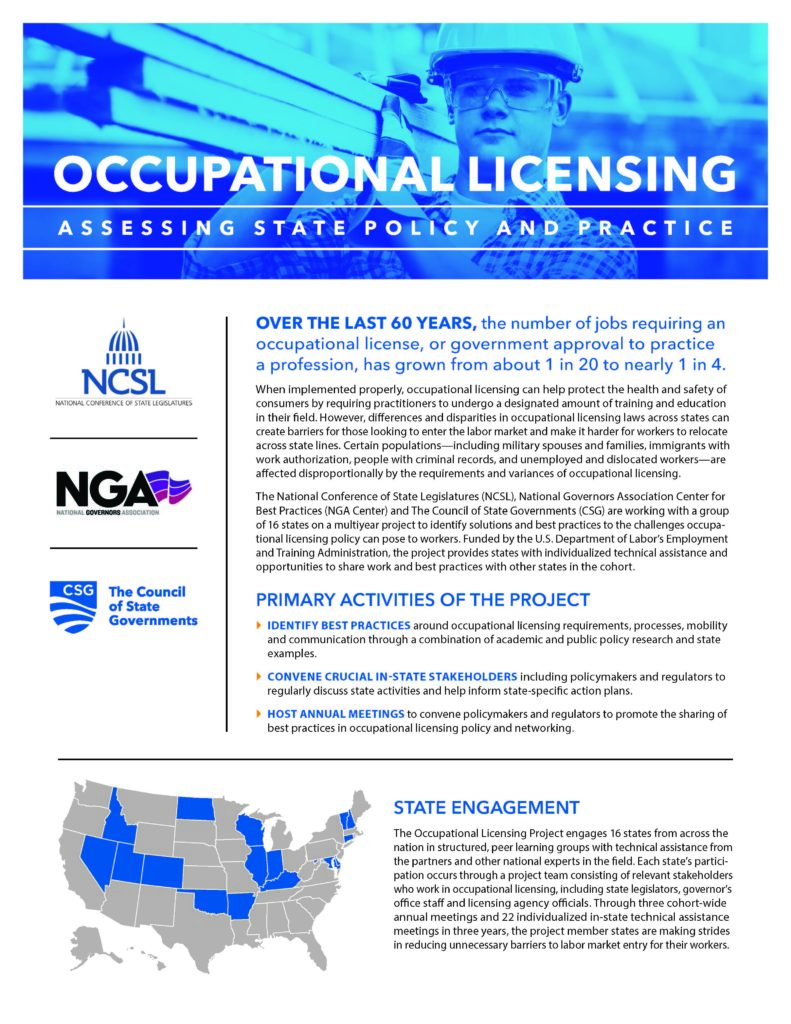
To identify problems in occupational licensure and help states find solutions, The Council of State Governments (CSG), the National Conference of State Legislatures (NCSL) and the National Governors Association (NGA) Center for Best Practices created in 2017 the Occupational Licensing Policy Learning Consortium, a partnership of 16 states. This work is made possible through a grant from the U.S. Department of Labor’s (USDOL) Employment and Training Administration. The Consortium has strengthened understanding of occupational licensure issues among participating states by providing a forum for the state leaders and stakeholder professions to learn about occupational licensing best practices, become familiar with and discuss the existing licensing policies in their state and identify current policies that create unnecessary barriers to labor market entry, especially for disproportionately affected populations. States also were tasked with creating an action plan that focuses on removing barriers to labor market entry and improves portability and reciprocity for select occupations.
CSG, NCSL, and NGA have facilitated Consortium partner assessment of evidence-based research, best practices, possible alternatives to licensure, multi-state comparable data and, state-specific data; and provided opportunities to network with national experts. Each state in the Consortium has received technical assistance from CSG, NCSL and NGA to develop their action plans. Consortium states also created a core team of officials to participate in project activities, as well as a broader group of stakeholders to serve as a continuing network in occupational licensure policy. Each state selected specific occupations and target populations to focus on through this work, as well as examining other aspects of licensure regulation addressed in their action plans.
The first phase of the project culminated in 2020 with a Report issued by the partner organizations that outlines the work of participating states and best practices in occupational licensure policy. Lessons learned by Consortium states outlined in the Report assist all state policy-makers in decisions surrounding occupational licensure. This site contains the Report, along with more information about state assistance Consortium states received, and a collection of project resources created by CSG and its partners on specific occupational licensing issues.


Frequently Asked Questions
How many states are participating in the consortium?There are 16 states currently participating in the consortium. They are Arkansas, Connecticut, Colorado, Delaware, Idaho, Illinois, Indiana, Kentucky, Maryland, Nevada, New Hampshire, North Dakota, Oklahoma, Utah, Vermont, Wisconsin.
How were the states selected?States were selected through a competitive RFA process. Applications were scored by the partner organizations and outside experts, and chosen based on scoring methodology.
Who are on the state teams?Each state has formed a project team to include representation from relevant stakeholders involved in occupational licensing, including: state legislators, the governor’s office, state workforce agencies, state regulatory or licensing boards, and state administrative agencies involved in occupational licensing.
What do states in the consortium receive?Although there is no direct funding available consortium states benefit from:
-
- Multi-state team meetings
- In-state learning consortium meetings
- Targeted, state-specific technical assistance
- Support for state action plan development and implementation
- Access to national experts
- Peer to peer learning opportunities
Licensing regulations can create unique barriers and challenges for certain populations who are entering the labor market or moving across states lines. This Barriers to Work series focuses on the specific barriers that may exist for four different population groups:
-
- Immigrants with work authorization.
- People with criminal records.
- Low-Income, unemployed and dislocated workers.
- Veterans and military spouses.
See the reports tab of this website for briefing papers on each of these disproportionately affected populations
What have the states done during the project?Led by facilitators from the partner organizations, each state team has developed a formal action plan to guide their efforts throughout the three-year project.
Topics of interest to the states include:
-
- Licensing barriers for the target populations
- Licensing board authority, composition and structure
- Sunrise & sunset provisions
- Interstate compacts

